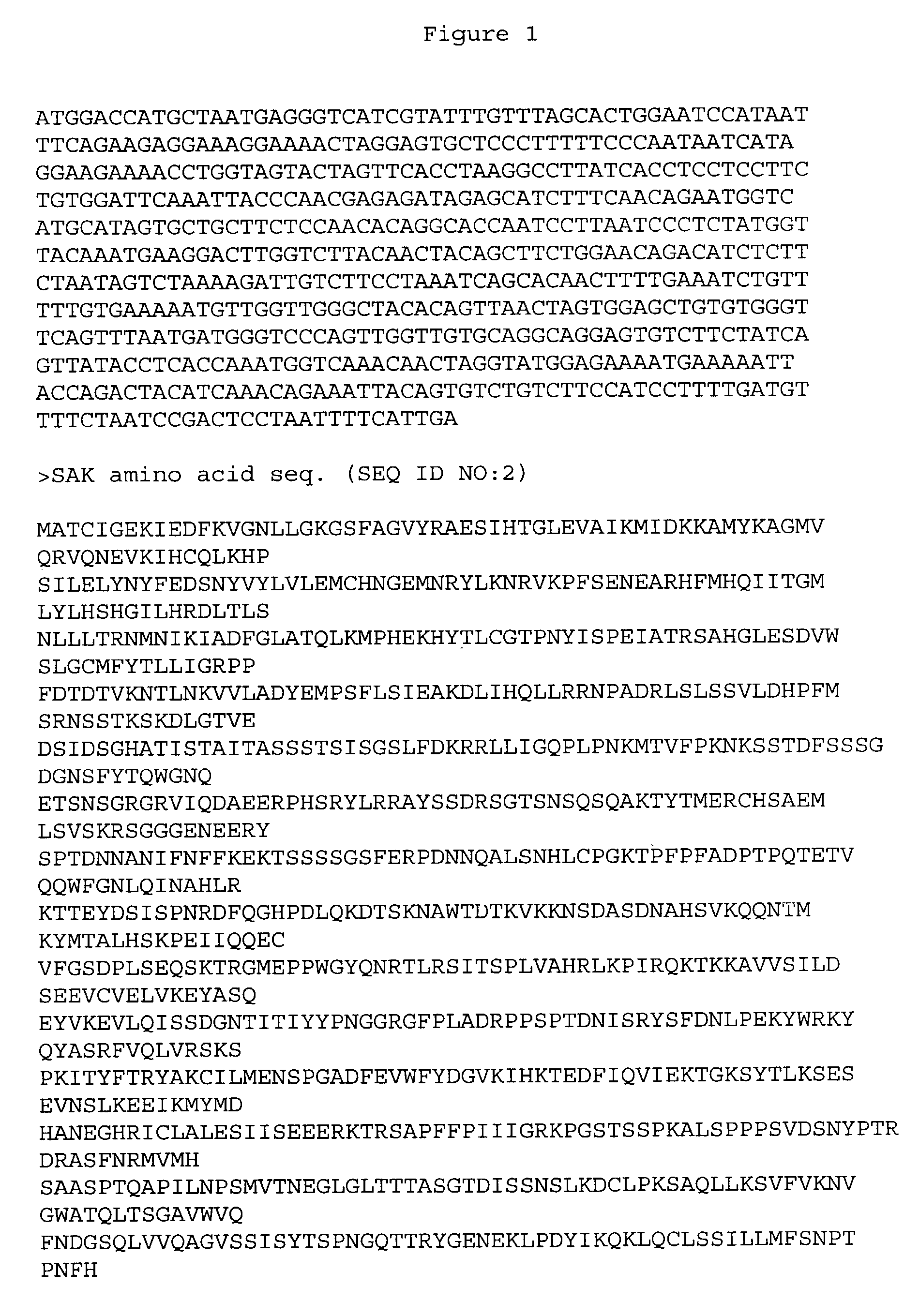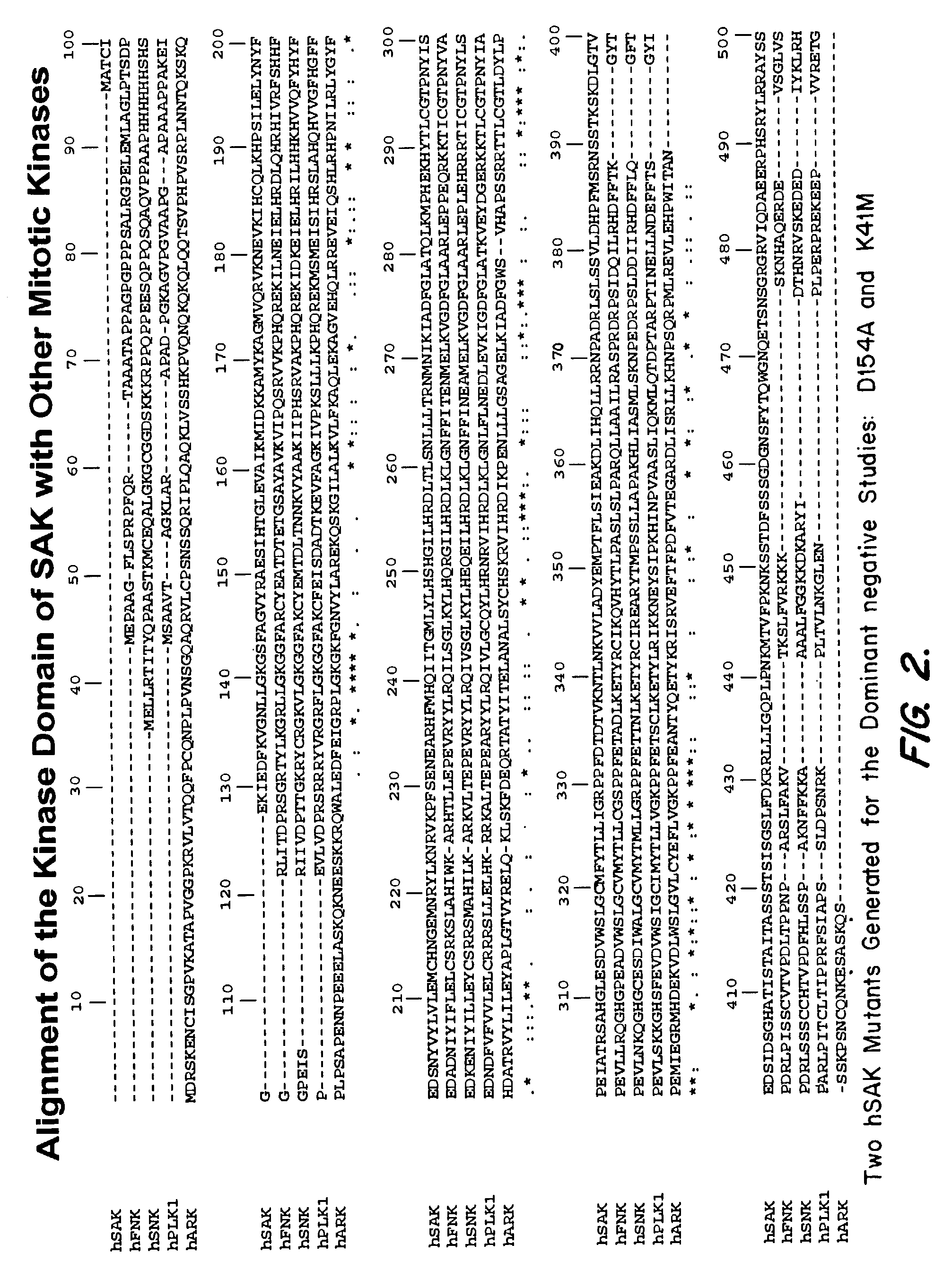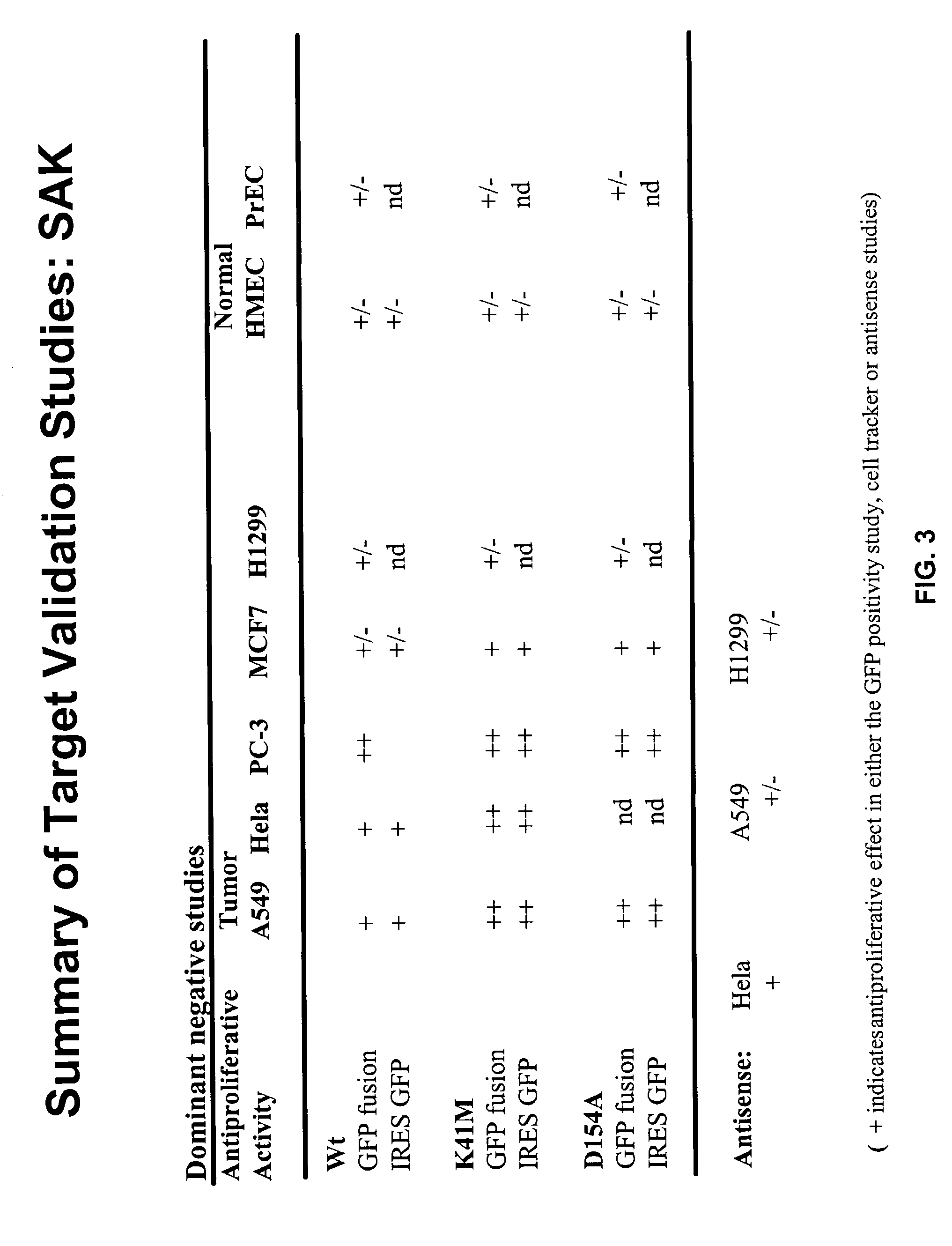SAK: modulation of cellular proliferation for treatment of cancer
a technology of cellular proliferation and cancer, applied in the field of sak, can solve the problems that the involvement of a protein in cell cycle regulation in a model system is not always indicative, and achieve the effects of modulating cellular proliferation and/or cell cycle regulation, reducing toxicity of chemotherapeutic agents, and enhancing sensitivity of a cell to chemotherapeutic agents
- Summary
- Abstract
- Description
- Claims
- Application Information
AI Technical Summary
Benefits of technology
Problems solved by technology
Method used
Image
Examples
example 1
Identification of SAK Using Proteomics Assay and Role of SAK in Modulation of Cellular and Tumor Cell Proliferation
[0220]Mass spectrometric analysis of hits generated in immunoprecipitation with antibodies specific to Chk2 “bait” were used to identify molecules involved in cell cycle regulation. SAK was shown to bind to Chk2 after a Chk2-SAK complex was isolated from a binding assay using immunoprecipitation with an anti-Chk2 antibody, and analyzed using mass spectroscopy. As shown in FIGS. 2–11, dominant negative studies with mutant SAK shown that mutant SAK has a stronger antiproliferative phenotype than wild type SAK in tumor cells, while neither wild type nor mutant SAK is antiproliferative in normal cells (using, e.g., GFP positivity and cell tracker assays). FIGS. 12–13 demonstrate that inhibition of SAK mRNA with antisense oligos is antiproliferative in A549 tumor cells and HeLa cells. Furthermore, FIG. 14 shows that SAK mRNA is overexpressed in some tumor cell lines. These f...
example 2
[0221]Samples include TRA-dGFP, TRA-SAK wt, TRA-SAK K41M, and mock. The SAK kinase domain and other SAK mutants can also be used in this assay.
[0222]Cells are transfected with nucleic acids encoding the sample proteins using Ca2+ transfection, and incubated for 24 hours. The cells are treated with Nocodiazole for 18 hours, with a 2 hour release. The cells are lysed using a lysis buffer comprising 50 mM HEPES pH 7.4, 1% Triton, proteinase inhibitors, phosphatase inhibitors, EDTA, and EGTA. Immunoprecipitate (e.g., with rabbit anti-GFP antibody).
[0223]Beads are washed with lysis buffer, then with kinase buffer (20 mM MOPS pH 7.2, 25 mM β-glycerol phosphate, 5 mM EGTA, 1 mM sodium orthovanadate, and 1 mM DTT. Add 30 μl kinase buffer to beads, then add Histon or MBP (substrate, 20 μg). Add γ-32P-ATP (10 μCi (66 nM) and cold ATP (final 90 μM) / MgCl2 (final 67.5 mM). Incubate for 10 minutes at room temperature, and run SDS PAGE.
[0224]It is understood that the e...
PUM
| Property | Measurement | Unit |
|---|---|---|
| molecular weight | aaaaa | aaaaa |
| molecular weight | aaaaa | aaaaa |
| molecular weight | aaaaa | aaaaa |
Abstract
Description
Claims
Application Information
 Login to View More
Login to View More - R&D
- Intellectual Property
- Life Sciences
- Materials
- Tech Scout
- Unparalleled Data Quality
- Higher Quality Content
- 60% Fewer Hallucinations
Browse by: Latest US Patents, China's latest patents, Technical Efficacy Thesaurus, Application Domain, Technology Topic, Popular Technical Reports.
© 2025 PatSnap. All rights reserved.Legal|Privacy policy|Modern Slavery Act Transparency Statement|Sitemap|About US| Contact US: help@patsnap.com



